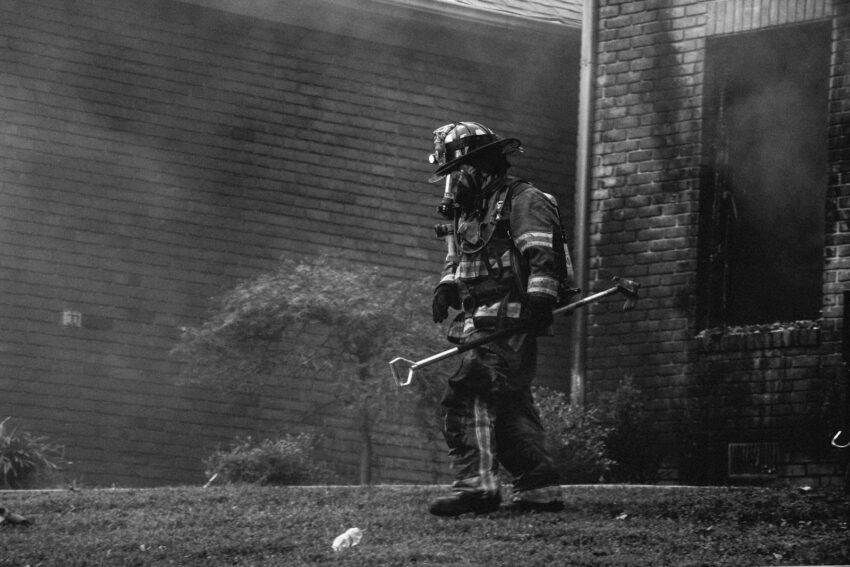Experiencing a house fire can be one of the most traumatic events a homeowner can face. The aftermath can leave you feeling helpless, unsure of how to begin restoring your cherished space to its former glory, or at least as close as possible. While the emotional damage is not easily repaired, the physical damage can be addressed with careful planning and professional assistance. In this article, we’ll explore the essential steps and considerations for homeowners dealing with fire restoration.
Long-Term Strategies for Restoring and Fire-Proofing Your Home

After addressing fire damage, consider long-term strategies for your restored home. This may involve upgrading building materials to fire-resistant ones or installing smoke alarms and fire suppression systems. Regular maintenance of electrical systems and appliances can also mitigate the risk of future fires.
Take the time to review and possibly revise your emergency preparedness plan. Having fire drills, alternative escape routes, and easily accessible fire extinguishers can increase your readiness in case of another incident. Educate every household member about these measures to ensure their safety.
Also, if you reside in an area prone to fires such as Rockwall, TX, remaining vigilant and informed about local fire-related restoration services, such as this fire damage Rockwall TX-based company, is a proactive step toward safeguarding your home. Building a rapport with these services can ensure faster response and familiar support in future emergencies.
The Ins and Outs of Working With Fire Damage Restoration Professionals
Restoring fire damage requires expertise and resources typically beyond a homeowner’s means or knowledge. Selecting a reputable restoration company is a critical step. Look for businesses with certifications from authoritative industry organizations, and don’t hesitate to ask for references and proof of insurance.
Once you’ve chosen your professionals, they’ll assess the damage and create a plan tailored to your home’s specific needs. This often includes water removal, smoke and soot cleanup, sanitization, and repairs or reconstruction. They should also communicate with your insurance company to streamline the claims process.
Restoration does not only mean bringing your property back to its pre-fire condition but also incorporating large fake plants and other elements that contribute to a fresh start. Professional restorers can also offer advice on design and materials that may be more fire-resistant or provide better long-term value.
Immediate Steps To Take After the Fire Is Extinguished
When the flames are gone and it’s safe to re-enter your home, immediate action is necessary to prevent additional damage. Contact your insurance company to report the incident and begin your claim. They will guide you through their specific process and may recommend reputable restoration companies.
Documenting the damage is a critical next step. Take photographs and create an inventory of damaged and destroyed items. This will serve as valuable evidence for your insurance claim and will help ensure you get a fair assessment.
Securing your property is also of utmost importance. Board up openings and tarp over exposed areas to protect against weather and unauthorized entry. This not only preserves what’s left of your home but may also be a requirement of your insurance policy.
Navigating the Insurance Claims Process for Fire Restoration
The claims process can be daunting, but understanding your policy is the first step. Know the extent of your coverage, any deductibles you’ll have to meet, and the timeline for filing a claim. Be diligent in submitting all necessary documentation promptly; delays can impede the restoration work and extend the time before you can return home.
Your insurer will likely send an adjuster to assess the damage. Accompany them if possible, pointing out all areas affected by the fire. Provide them with your inventory and any receipts for expenses incurred as a result of the fire, such as hotel stays or emergency purchases.
Discrepancies between your assessment and the insurance estimate can occur. If you feel the evaluation is insufficient, you can negotiate. Some homeowners opt to hire a public adjuster to advocate on their behalf, especially when significant sums are involved.
Once your claim is approved, ensure you receive a clear timeline and understanding of the disbursement process. Insurers often issue payments in increments, tied to different stages of the restoration. Keeping track of these payments and the work completed is crucial.
Overall, recovering from a home fire is undeniably challenging but with thoughtful action and expert guidance, restoration is achievable. Not only can your home be restored, but with preventive strategies in place, it may emerge stronger and more resilient than before. By keeping the discussed key points in mind, the path to recovery can be navigated more smoothly, turning a page on a difficult chapter and starting anew.


